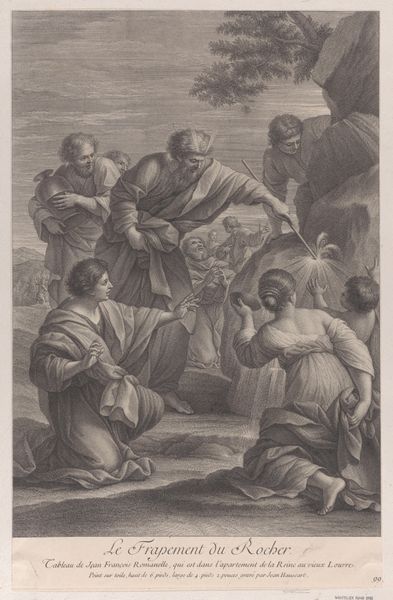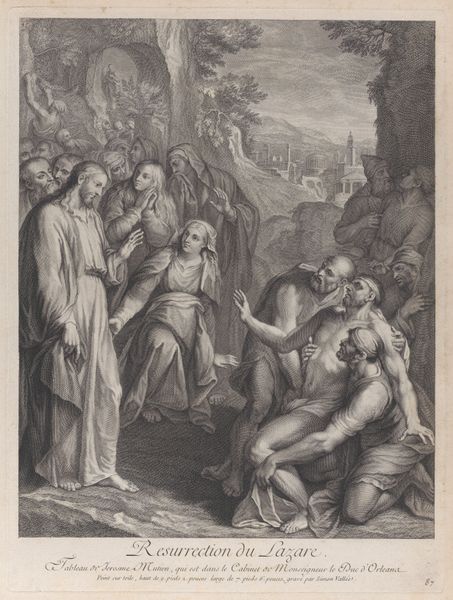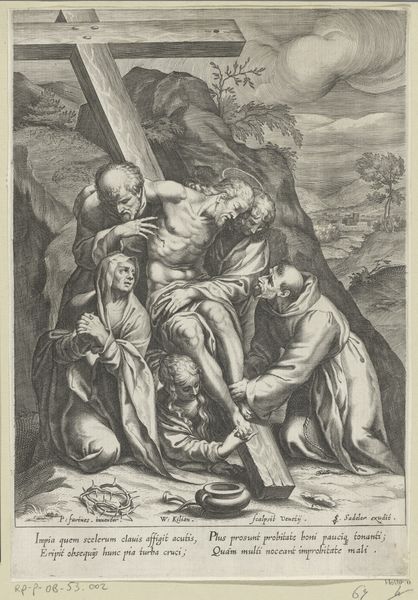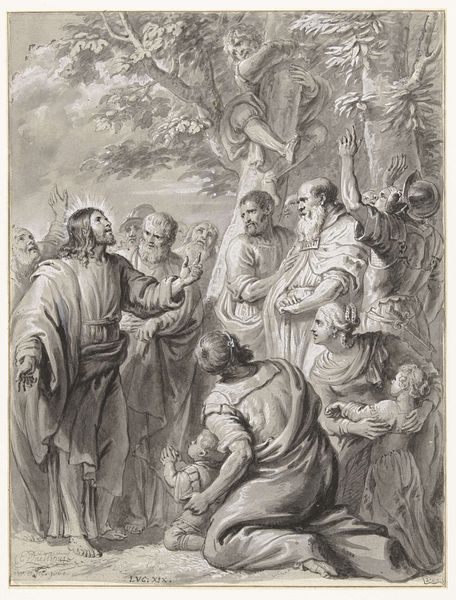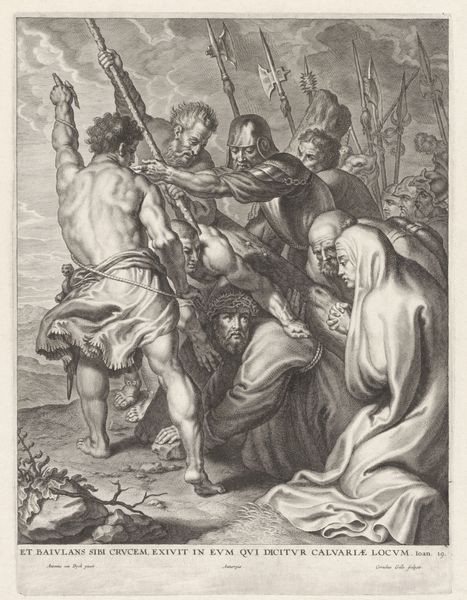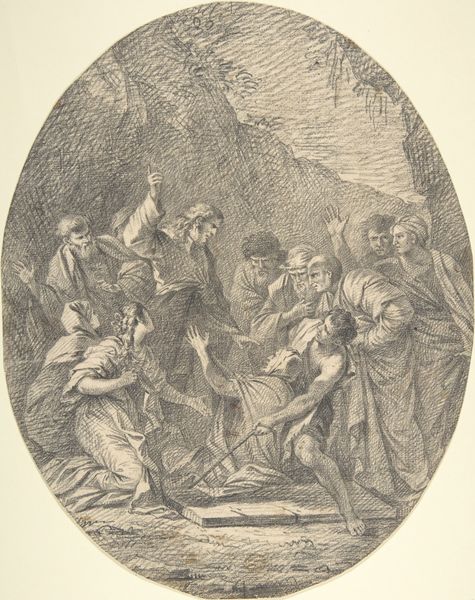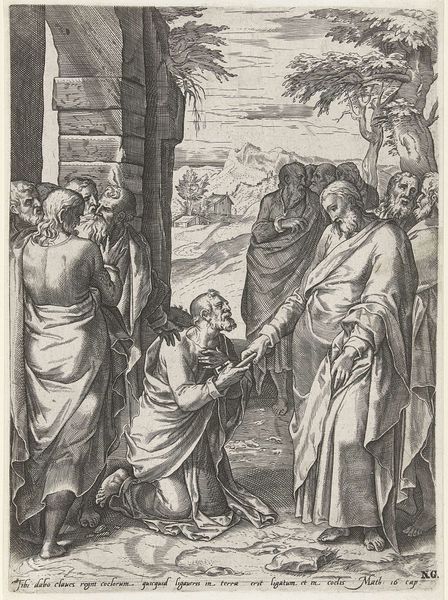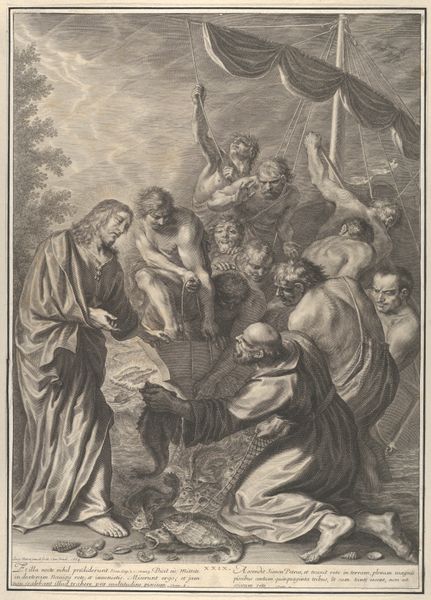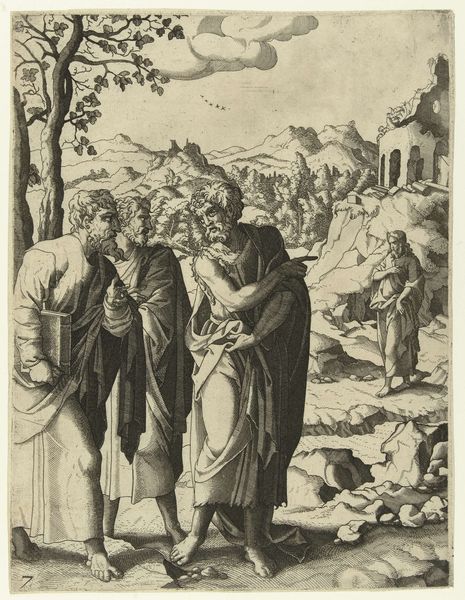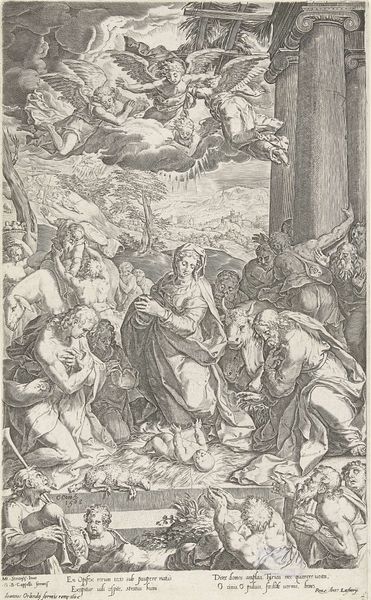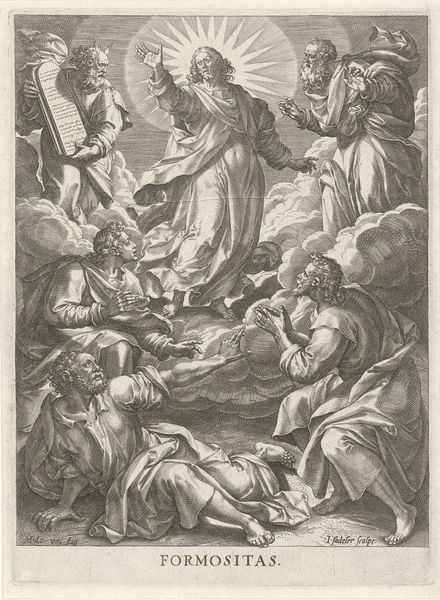
drawing, print, engraving
#
drawing
#
narrative-art
#
baroque
# print
#
figuration
#
pencil drawing
#
orientalism
#
history-painting
#
engraving
Dimensions: Sheet (Trimmed): 11 7/8 × 8 3/16 in. (30.1 × 20.8 cm)
Copyright: Public Domain
Editor: So, this engraving, "Saint Francis Xavier baptizing the Indians," dates from between 1714 and 1774. The fine lines really emphasize the drama of the moment. I'm struck by how the different textures, created purely with lines, give depth and interest to the scene. What strikes you about it? Curator: Look at the physical act of engraving itself. The labor, the tools required, the printing process—all crucial. This wasn't just about illustrating a religious event; it was about mass-producing images to circulate specific ideologies. Editor: So, you're thinking about this less as a singular artwork, and more as a tool for something? Curator: Precisely. Think about the consumption of these prints. Who was buying them? What narratives were being reinforced through their distribution? And consider the depiction of labor – who is working, whose bodies are displayed, and who benefits. The means of making impacts the narrative portrayed, in this instance the religious indoctrination and attempted cultural appropriation represented. Editor: I see, so the actual process, and who controlled it, tells its own story. Are there any specific material aspects of the engraving itself that further demonstrate your point? Curator: Absolutely. The very choice of engraving—a medium easily reproduced—points to a desire for widespread dissemination of a colonial, religious message. The level of detail achievable speaks to specialized craftsmanship that serves the aims of that specific message. Each printed image acted like a standardized stamp to disseminate the worldview from the Church. Editor: So, even the act of choosing printmaking is itself a kind of statement? Curator: It's not just a statement, but a deliberate act of cultural and religious diffusion, enabled by particular material means. It allows us to challenge the artistic value and cultural context from a material production angle. Editor: I hadn't considered the materials and production processes as actively shaping the message, rather than simply conveying it. That's fascinating. Curator: Seeing art through the lens of production and consumption opens up critical questions about power, labor, and cultural exchange. Hopefully this offers a perspective to consider that the act of 'making' has meaning.
Comments
No comments
Be the first to comment and join the conversation on the ultimate creative platform.
